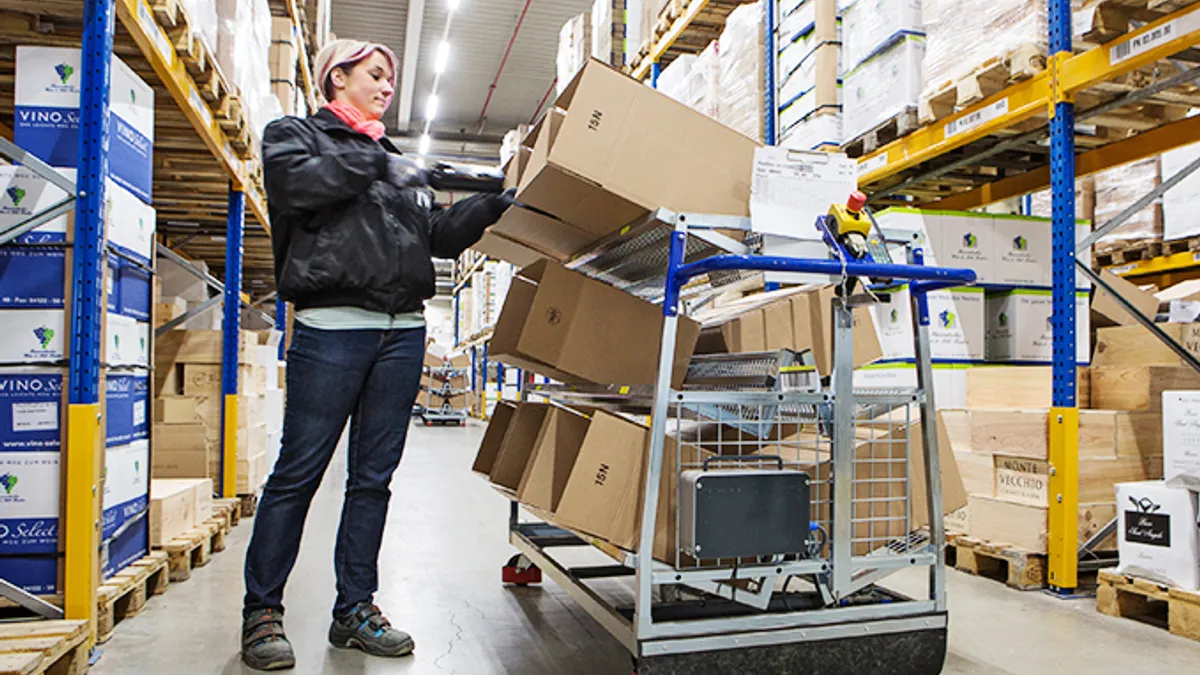Dive Brief:
- In the fourth quarter of 2020, the demand for temporary workers is expected to decrease 15.1% compared to the same time period in 2019, according to the Palmer Forecast published Oct. 8 by G. Palmer & Associates. Several factors may be creating the slow down, including "uncertainty of a second round of stimulus dollars for unemployment benefits," and "additional bail out for businesses impacted by COVID-19," Greg Palmer, founder and managing director of the California-based human capital advisory firm, said in a statement.
- Payroll employment rose by approximately 661,000 in September, according to the most recent U.S. Bureau of Labor Statistics (BLS) report published in October; however, the amount fell short of economists' predictions. There were 8,100 temp jobs added in September, which represented a 16.1% year-over-year decline, according to the Palmer Forecast, which is based, in part, on BLS data and "other key indicators." Temporary employment gains lost momentum in September, as the prior three months added more than 100,000 jobs each month, according to the report. A "historic 475,000 temp jobs have been lost thus far in 2020," the firm said.
- "One of the most revealing indicators to watch is the temp help penetration rate, because it measures temp help as a percentage of total employment," Palmer said. "In September 2020, the temp penetration rate [was] unchanged at 1.74% of the total labor market, versus a low of 1.3% in June 2009, and [the] cycle's peak at 2.05% in December 2019." The Palmer Forecast model was initially developed by the A. Gary Anderson Center for Economic Research at Chapman University and serves as an indicator of economic activity, according to the firm.
Dive Insight:
The onset of the pandemic in the U.S. created initial demand for temp workers, but financial uncertainty is causing a slowdown in hiring, according to the Palmer Forecast.
Prior to the pandemic, temporary employment was predicted to be on the upswing as temp workers and contractors allowed businesses to respond quickly to market conditions, according to a study from labor market analytics firms Emsi and True Blue. In March, as many states began shelter-in-place orders to prevent the spread of the novel coronavirus and some companies pivoted to telework, temporary workers were in demand. Freelancer.com realized a 21% year-over-year increase in jobs posted in Q1 2020 compared to Q1 2019, according to the company's May 14 quarterly report.
Companies in the essential food and warehouse industries also began hiring gig workers. For example, in March, Instacart announced plans to hire 300,000 additional full-service shoppers over three months. Then the following month, announced plans to hire 250,000 more shoppers. But hiring temporary workers is expected to continue decreasing as businesses seek measures to stay afloat as the pandemic continues, according to the Palmer Forecast.
Talks for the next federal economic stimulus package are spearheaded by Treasury Secretary Steve Mnuchin and House Speaker Nancy Pelosi, and could include another round of payroll support and loan programs. But, according to Goldman Sachs, due to a persisting deadlock on the details of the package, it will most likely not be passed by Congress until after the Nov. 3 presidential election, CNBC reported.














